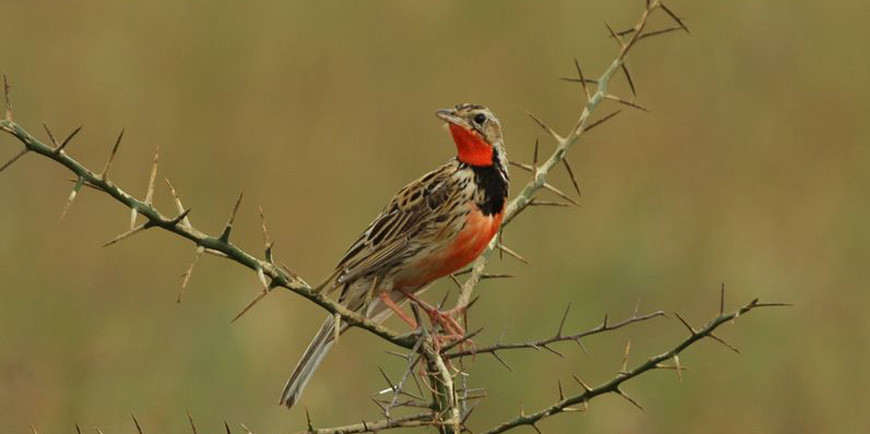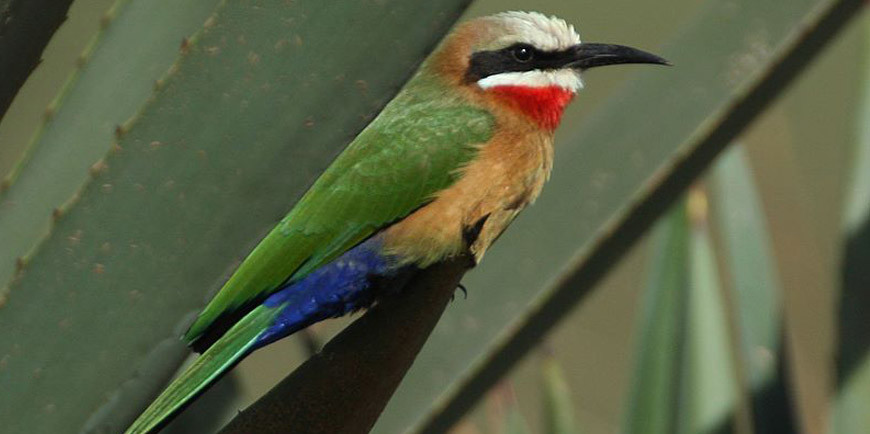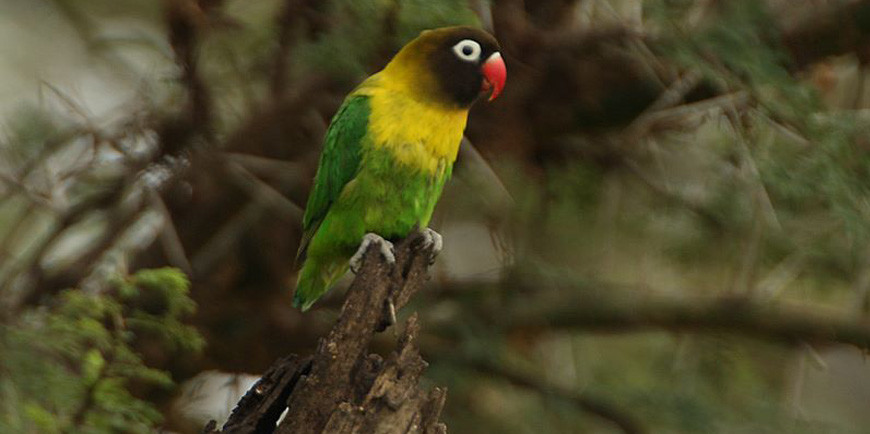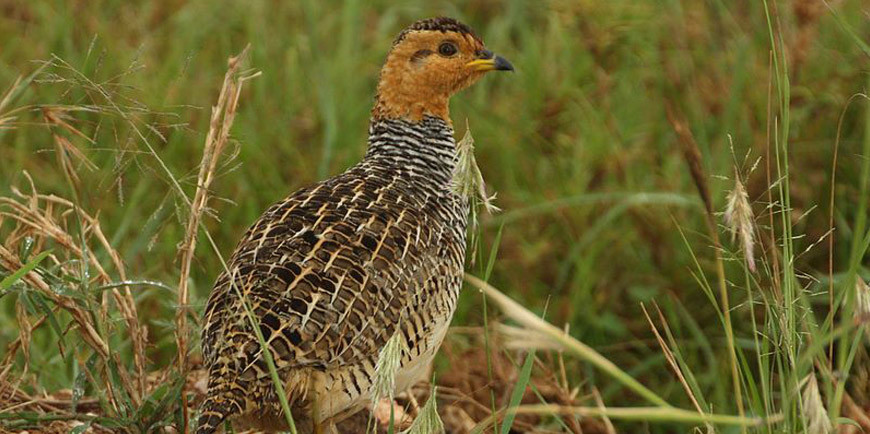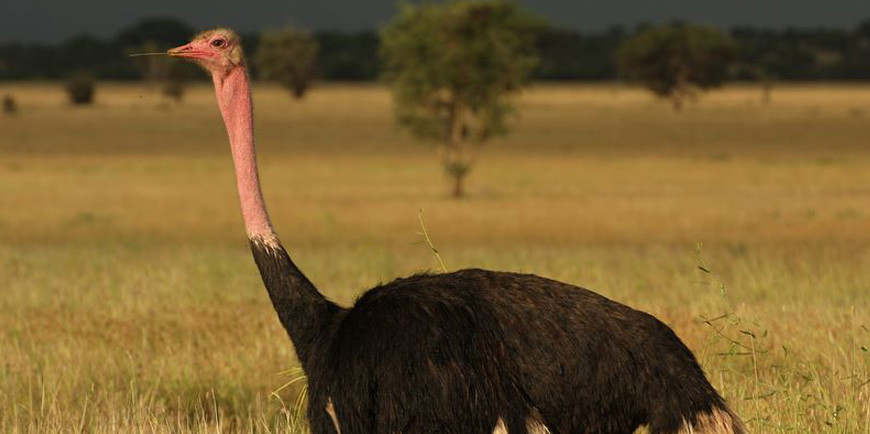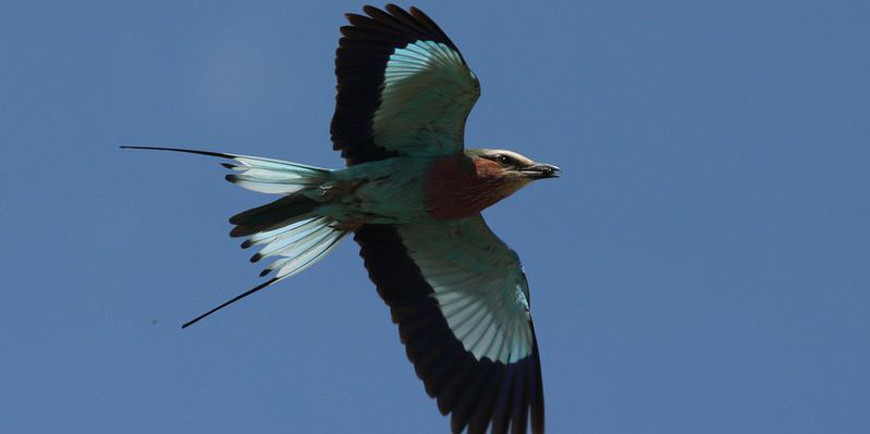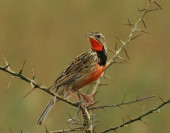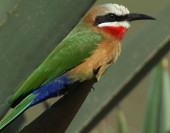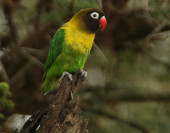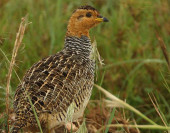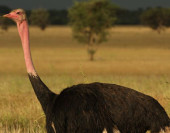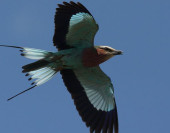BOOK THIS TOUR
Day 1: Arrival in Nairobi for Kenya Birding Safari
On arrival at the Jomo Kenyatta International Airport beyond belief safari representative receives and you will be transferred to the HOTEL FOR check in, depending on the time of arrival; we visit the National Museum Bird Gallery and later have a leisurely bird walk in the Nairobi Museum Botanical Gardens
Overnight at NAIROBI SAFARI – PARK
Day 2: Kenya Birding Tour to Nairobi National Park – (Shoebill Stork Record) Kenya Birding Safaris
After an early morning breakfast, we go bird watching to National park.
Nairobi national park has a diverse avifauna with checklist of over 520 bird species. One of the eight species of Kenya Mountains Endemic Bird Areas, 27 species of the 94 Somali – Masai biome, and 25 species of the 67 African Highlands biome that occur in Kenya, have been recorded in the area.
Migrating Lesser Falcons roost at the site in large numbers (Over 5,000 individuals have been recorded at a time), and the park’s substantial area of undisturbed grassland is of great importance for species such as the restricted grassland is of great importance for species such as the restricted – range Jackson’s Widowbird, which breeds here regularly after good rains. The globally threatened Corncrake, Madagascar pond – Heron, Lesser Kestrel, Corncrake, and Jackson is having both been spotted. We look out for species known to the spot.
Overnight at Nairobi Safari Park
Day 3: Whole Day Birding Tour in Nairobi National Park.
We search for the African Silverbill; Red – winged Starling, common Bulbul, Grey – headed Sparrow, Saddle – billed Stork, Little Egret, the Common Squacco, Goliath, Grey and Black Headed Herons, red – billed and Africa Squacco, Goliath, Grey and Black Headed Herons, red- billed and Africa Firefinches, the Booted, Tawny, steppe, and Martial Eagles, Yellow-Whiskered Greenbul, long – tailed and Common Fiscals, Spotted and Pale Flycatchers, Common Stonechat, Blackcap, Yellow-breasted Apalis, Mountain Yellow Warbler, Yellow White – Eye, White – Bellied Tit, Variable Sunbird, Bronze Manikin, Red – Cheeked cordon Blue, Streaky Seedeater, Collared Widow bird, the Zitting, Desert, Winding, Stout, Pectrol – patch, Singing and Rattling Cisticolas, Gassland Pipit, Rufouse – naped and Athi Short-toed lark, Lesser – striped and red-rumped and Barn Swallow, Brown Parisoma, Oliveceous Waebler, Brubru, Whinchat, the Little, White-ramped, Horus and Africa – palm Swifts, Quail – Finch, Common and Yellow – bellied Waxbills, African – hawk Eagle, white – headed and Sport – flanked Barbets, Baglafecht Weaver, Brown – snake Eagle, and many more: Along with a fine number of mammals among which will include; the Cape Buffalo, Burchell’s Zebra, Hippopotamus, Masai Giraffe, Rhinos, Coke’s Hartebeest, the Vervet and Syke’s Monkey, just to mention but a few.
Overnight at Nairobi Safari Park
Day 4: Birding to Mount Kenya National Park
Today we drive birding to the important bird area named after Kenya’s highest mountain. Birding Mount Kenya can be so well paying since the site has a rich montane avifauna. The park has six of the eight Kenya Mountains Edemic Bird Area and 54 of the 70 Afrotropical Highlands biome species that occur in Kenya. Mountain Kenya area has records of globally and regionally threatened species, some with no recent records. They include Abbott’s Starling, Lesser Kestrel (a passage migrant on the moorland), Jackson’s widowbird (at up; to 3,000 m), Sharpe’s longclaw, Olive Ibis, Lammergier, Ayre’s hawk eagle, African Crowned Eagle, African Grass Owl, Cape Eagle – owl, Purple – Throated Cuckoo – shrike, Long tailed widowbird, Abyssinian Owl (very rare and poorly researched), Scarlet – tufted Sunbird, and Kenrick’s Starling which is confined to this area in Kenya.
We search for these specialties along with other wildlife among which will include:- Black-and-white Colobus Monkey, Sykes monkey, Bushbuck, Cape Buffalo, African Elephant, Olive Baboon, Waterbuck, Black Rhino, Leopard, Giant Forest Hog, Genet Cat, etc.
Day 5: Whole Mount Kenya National Park Bird Watching Tour
We look out for more species possibly missed the previous day.
Overnight at Lake Naivasha Country Club
Day 6: Bird Watching Safari to Lake Naivasha Ramsar Site of Kenya
After breakfast, we bird to the shallow freshwater lake with fringing Acacia woodland – Lake Naivasha Ramsar site (the second site listed by Kenya as a Wetland of International Importance under the Ramsar Convention).
Naivasha’s water is supplied by the permanent Malewa and Gilgil, plus the seasonal Karati rivers which all drain the Aberdare Mountains along with substantial ground – water seepage. The lake has no surface outlet. It is thought that a combination of underground outflow and sedimentation of salts keeps the lake fresh, unlike other endorheic lakes in the eastern Rift Valley.
It is the highest of the Rift Valley Lakes at 1,880 m, the second largest freshwater lake and one of the only two freshwater lakes in Kenya. The fascinating bird life of over 350 species is supported buy the availability of dense vegetation at the lake edge. Papyrus fringes the main lake’s shore and cloaks the inlets of the Gilgil and Malewa rivers.
Overnight at Lake Naivasha Country Club
Day 7: Lake Naivasha Bird watching Tour
After breakfast we still bird the lake and its surroundings, we look out for the globally threatened Grey – crested Helmeted-shrike, Basra Reed Warbler, Lesser Flamingo, along with large congregations of Red-knobbed Coot, African Spoonbill and Little Grebe. We continue for locality species among which might include;- Grey-backed Fiscal, Pink-backed Pelican, Great Cormorant, Purple Heron, Red-billed Teal, Hottentot Teal, Black Crake, African Jacana, Giant and Malachite Kingfishers, African Fish-Eagle, Little Grebe, Pink-backed Pelican, Long-tailed Cormorant, Southern Pochard, Gray-headed Gull, Whiskered Tern, Long-toed Lapwing, Blacksmith Lapwing, Three-banded Plover, Black Heron, Lesser Moorhen, Greater Painted – Snipe, African Skimmer, Purple Heron, Little Bittern, African Rail, Lesser Swamp Warbler, Red-chested Cuckoo, pearl-spotted Owlet, White-fronted Bee-eater, Green Wood-Hoopoe, African Gray Hornbill, Red-fronted Barbet, Black- throated Honey guide, Gray-headed Woodpecker, Gray-backed Fiscal, Gray-headed Bushshrike, White-browed Robin-Chat, Gray-capped Warbler, Black- lored Babbler, Purple Grenadier, Pin-tailed Whydah, Spectacled Weaver, Ruepplell’s Griffons, Verreaux’s Eagle, Augur Buzzard, Lanner Falcon, Speckled Pigeon, Mourning Wheatear, and many more
Overnight at Lake Naivasha Country Club
Day 8: Bird Watching to Lake Baringo via Lake Nakuru
This morning after breakfast, we bird all way to Lake Baringo Conservation Area. We have bird Lake Nakuru on our way. Lake Nakuru National Park (Ramsar Site) boost of an up to 450 species bird checklist and a 1,496,000 waterbirds record therefore we cannot afford passing without stopping to pocket some crucial species. Five globally threatened species have been recorded here, namely Madagascar Pond-Heron, Lesser Flamingo, Pallid Harrier, Greater Spotted Eagle, Grey-crested Helmet-shrike along with large congregations of Greater Flamingo, Black-necked Grebe, Little Grebe, Great White Pelican, Yellow-billed Stork, African Spoonbill, Black-winged Stilt, Grey-headed Gull and Gull-billed Tern.
Overnight at Lake Baringo Club
Day 9 & 10: Lake Baringo Bird watching Tour
We have a whole days birding around Lake Baringo Conservation Area. Baringo is a well-known destination for birdwatchers and boosts up to 500 bird species Checklist. The lake used to boast a large Goliath Heronry with over 20 individuals on record, although Goliaths are still breading around the lake, the Heronry has disappeared. However, Lake Baringo is at the southerly – easterly end of the range fro the regionally threatened Jackson’s Hornbill along with their closely similar species, the Von der Decken’s Hornbill.
Baringo Bird Area is not only a home to 36 of the 94 Somali – Masai biome species that occur in Kenay but also four globally threatened species namely; Madagascar Pond-Heron, Lesser Flamingo, Pallid Harrier, Lesser Kestrel. We also expect the Spur – winged Goose, Knob-billed Duck, Gabar Goshwk, Shikra, Black Crake, African Jacana, Spur-winged and Long-toed Plovers, Heuglin’s Courser, Slender-tailed Nightjar, Northern White-faced Owl, Greyish and Verreaux’s Eagle Owls, Black-crowned Night Heron, Little and Dwarf Bitterns, Green-backed, Purple and Goliath Herons, Woolly- necked and Marabou Storks, Hadada Ibis, Fulvous and White-faced Whistling Ducks, Abyssinian Scimitarbill, Northern Red-billed, Eastern Yellow- billed and African Grey Hornbills, Red-fronted Tinkerbird, Red-fronted and D’Arnaud’s Barbets, Lesser Honeyguide, Nubian and Bearded Woodpeckers, Sand Martin, Northern Brownbul, Brown Babbler, White-browed Robin Chat, White-browed Scrub Robin, Southern Black, African Grey and Lead-coloured Flycatchers, Purple Grenadier, Crimson-rumped and Black-cheeked Waxbills, Pin-tailed Whydah, White-bellied Canary, Somali Golden-breasted Bunting, Allen’s Gallinule, Purple Swamphen, Senegal Thick-knees, Northern Grey Tit, Mouse-Coloured Penduline Tit, Pygmy Batis, etc.
Overnight at Lake Baringo Club
Day 11: Bird watching at the Kongelai Escarpment
We bird down the Kongelai Escarpment, we look out for the Brown Snake-Eagle, Martial Eagle, Hartlaub’s Marsh Widowbird, Eastern Grey Plantain-Eater, Brown Parrot, Black-winged Red Bishop, Stripe-breasted Seedeater, and White-creasted Helmet-shrike, Yellow-billed Shrike, LESSER Blue-eared Starling, White-creasted Turaco, Chestnut-crowned sparrow-weaver, Dark Chanting Goshwk, Golden-breasted Bunting, Double-toothed Barbet, Northern Brownbul and many more.
Overnight at Sirikwa Cottages
Day 12: Birding Safari to Kakamega Forest Reserve
After an early morning breakfast, we bird to Kakamega Forest Reserve. The Forest is generally considered the eastern-most remnant of the lowland Congo rainforest of Central Africa since it is dominated by Central African species of Flora and Fauna.
Kakamega Forest’s avifauna is not only nationally well known, rich, unusual in its composition, fascinating and unique combination with the dominant central African lowland species alongside highland species, but also continentally. Its 194 forest dependant species which include: 40 of the 43 Guinea – Congo Forest and 33 of the 70 Afrotropical Highlands biome species that occur in Kenya, rank the highest of any Kenyan forest and it is probable that at least 45 of the birds of Kenya are confined to this area in the country.
Overnight at Rondo Retreat Centre
Day 13 & 14: Kakamega Forest Birding Tour
We afford spending two days at Kakamega, a Kenya birdwatchers paradise. On the want list, please include two globally threatened species-Chapin’s Flycatcher and Turner’s Eremomela, 16 regionally threatened species, and the World’s smartest bird – African Grey Parrot along which is confined to this spot in the country (Less than ten pairs are likely to existing).
We bird for Brown Illadopsis, Equatorial Akalat, Black-faced Rufous Warbler, Chubb’s Cisticola, Black-collared and Buff-throated Apalises, Black-and-white-casqued Hornbill, the Brown-eared and Yellow-creasted. Woodpeckers, African Blue and Dusky –crested Flycatchers, Common and Chestnut Wattle-eyes, Black-billed, Dark-backed and Brown-capped Weavers, Red-headed Malimbe, Pink-footed Puffback, Square-tailed Drongo, Stuhlmann’s Starling, Bar-tailed Trogon, Luhder’s Bush-shrike, Grey-green or Bocage’s Bush-shrike, Green-throated and Green-headed Sunbirds, the Great Blue and Black – billed Turacos, the restricted – range Blue – headed Bee-eater, Dusky Tit, Yellow bill, Brown-chested Alethe, White –headed Wood-hoopoe, Western Black-headed Oriole, White-Spotted flufftail, the Ansorge’s Slender-billed, Joyful and Shelley’s Greenbuls Red-headed Blue bill, Yellow throated Leaf-love, Uganda Woodland Warbler, White-chinned Prinia, White-throated Bee-eater, African Crowned Eagle, Red-tailed Bristlebill, White-eyed Slaty Flycatcher, Grey-headed Negrofinch, the Double-toothed, Yellow-spotted, Grey-throated and Yellow – billed Barbets and many more.
Overnight at Rondo Retreat Centre
Day 15: Birding Tour to Kisumu for Lake Victoria species Bird watching adventure.
We have breakfast then leisurely bird to Kisumu to feature the shores of Lake Victoria. At Dunga swamp Important Bird Area, we search for the globally threatened Papyrus Gonolek alongside the Parasitic Weaver, Brimstone Canary, Western Banded Snake Eagle, Red-headed Lovebird, Fawn-breasted Waxbill, Bar-breasted Fire finch, Bronze Manikin, Purple-banded and Super B Sunbirds, Black-rumped and B lack-faced Waxbills, Speckle-breasted Woodpecker, Brown-backed Scrub Robin, Green Crombec, Marsh Tchagra, Black-billed Barbet, the Little, cattle and Great Egrets, Yellow-backed Weaver, Northern Brown-throated Weaver, African Pygmy and Malachite Kingfishers, Swamp Flycatcher, Greater Swamp Warbler, White-winged and Whiskered Terns, African Skimmer, Black-bellied Fire finch, White-crested Turaco, Dark-capped Yellow Warblers, Red-faced, Singing, Whistling, Croaking, siffling and Zitting Cisticolas, Grey-capped Warbler, Red-shouldered Cuckoo-shrike, Cardinal Quelea, Black and Black- winged Red Bishops, Hartlaub’s Marsh and Yellow-mantled Widow birds, Red-Chested and Copper Sunbirds, Shikra, African Thrush, Black-headed Gonolek, Grosbeak, Compact, Holub’s Golden, Slender-billed, Yellow-backed, Jackson’s Golden-backed Weavers, Fan-tailed Widowbird, Southern Red Bishop, Rock Praticole, Bar-breasted Fire finch, Yellow-throated Leaf love, Senegal Coucal, Village Indigo bird, name it.
Overnight at Kisumu Sunset Hotel
Day 16: Birding Safari Masai Mara National Park
This morning, we bird all way to the famous Masai Mara National Park, a renowned home for Africa’s Big Five (African Lion, African Elephant, Leopard, Rhinoceros, and Cape buffalo). On arrival, we go birding on an evening gave drive-an opportunity to “Tick-off” some mammals and other wildlife. Please expect a productive birding activity at this site. More than 500 bird’s species are known to occur, including 12 species of Cisticola and 53 birds of prey. Grassland birds are especially well represented. Large numbers of Palearctic migrants winter in the area, including Caspian Plover and White Stork.
There is a single record of Shoebill Stork at the Musiara swamp.
As an endemic bird area, Masai Mara has all the three of Serengeti Plains and one of the eight species of the Kenya Mountains Endemic Birds Areas that
Overnight at Nairobi Safari Club
Day 19: Birding From Nairobi to Tsavo East National Park
We bird to Tsavo East National Park, on of the oldest National Parks in Kenya after being established in April 1948.
Tsavo East National Park has a prolific bird with an astounding checklist of up 500 species on record. The park lies within the migratory routes of Palearctic migrants which qualify it as an important spot for these species especially the rarely seen sooty and Eleonora’s Falcons.
The park is home to 61 of the 94 species of the Somali-Masai biome that occur in Kenya. Four globally threatened species namely; Taita Thrush, Friedman’s Lark, Lesser Kestrel and Basra Reed Warbler along with seven regionally threatened species namely; African Fin foot, African Darter, Great egret, Saddle-billed Stork, White-headed Vulture, Martial Eagle, and Violet Wood Hoopoe have been recorded at this site.
Overnight at Tsavo Park Hotel
Day 20: Birding Tour of Tsavo East National Park and Transfer to Malindi
We have a game drive for more Savanna bird species as well as big and small game after which we transfer to Malindi. We look out for the Cut-throat Finch, Golden-reasted Starling, African Bare-eyed Thrush, Irania, Quail-plover, Pangani Long claw, Abyssinian Scimitarbill, Violet Wood- hoopoe, Southern Ground Hornbill, Spotted Eagle-Owl, Long-crested Eagle, Square-tailed Nightjar, Somali Long-billed Crombec, the Eastern Paradise, Steel-blue, and Straw-tailed Whydahs, Scaly Chatterer, Spotted Eagle-Owl, Spotted Flycatcher, Vulturine Guinea – Fowl, Crested Francolin, Red-chested Cuckoo, Black-cuckoo Shrike, Eurasian and Black- headed Orioles, Gabar Goshawk, Three-streaked Tchagra, Eastern Violet-backed, and Variable Sunbirds, Red-fronted Warbler, Green-winged Pytilia, white-headed and Blue-napped Mouse birds, Sulphur-breasted Bush Shrike, Red-billed and Yellow-billed Oxpeckers, Black-fronted Bush Shrike, Yellow-throated Woodland Warbler, Yellow-bellied and Striped – checked Greenbuls, White-Starred Robin, the National Taita Thrush, Taita white-Eye, Taita Apalis.
Ayres’s Hawk-Eagle, Tawny, Steppe, Imperial, Martial and Whlberg’s Eagles, Egyptian Vulture, Bateleur, Black-shouldered Kite, Barbary Falcon, the Grey and Common Kestrels, Red-winged Lark, Somali and Temminck’s Coursers, Crested Francolin, white-bellied and Buff-crested Bustard, Somali Ostrich, Olive-Tree Warbler, Red-billed Buffalo Weaver, Northern Pintail, Red-billed Teal, Fulvous Whistling and White-faced whistling Ducks, common Sandpiper, Collared Pratincole, and many more.
Fly back to Nairobi for day room preparing to catch a flight back home in the night.
END OF SAFARI



